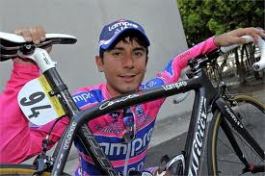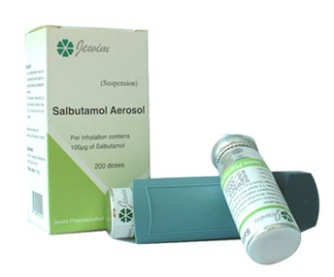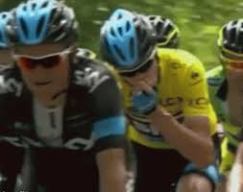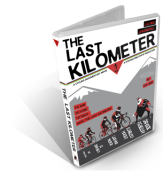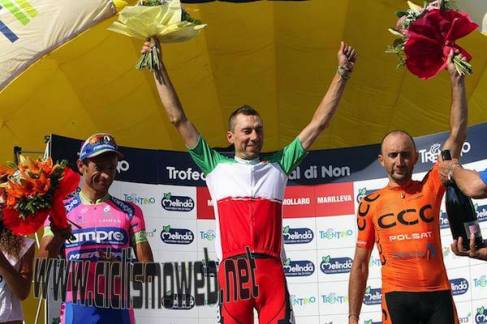original article: http://www.cyclingnews.com/news/pelotons-reactions-to-dopers-a-rebellion-acquarone-says
Giro d’Italia directeur says decision on Vini Fantini for next races pending
The official announcement that Vini Fantini’s Mauro Santambrogio tested positive for EPO today followed weeks of rumors: ever since the former BMC domestique turned into a champion, winning his first Grand Tour stage at age 28 on stage 14 of the Giro d’Italia in Bardonecchia on May 18, the whispers turned to grumbles. Yet the race manager Michele Acquarone sees the peloton’s response to the news as a positive change in the sport.
“Of course I’m not happy, but I’m not even surprised,” Acquarone told Tuttobiciweb.it. “We all knew.”
All during the Giro, riders pointed fingers at Di Luca and Santambrogio, and finally the Di Luca’s EPO positive came public on May 24, almost a month after the sample was collected out of competition. Santabrogio’s positive came from May 4, on the opening stage of the Giro, but was only announced today.
“The nice thing is, the peloton is rebelling,” Acquarone said. “The bunch longer accepts certain things, and will point a finger, denouncing that what they say seems anomalous. First there are the voices, then the analysis to nail the cheaters.”
Acquarone’s statements are backed up by public denunciation of Santambrogio, and the team that hired him, by his fellow professionals on Twitter:
“I hope cycling followers realise that s(t)upidity of the individual can’t be banned. Damaging our credibil(i)ty anno 2013 deserves no 2nd chance.” Stef Clement (Blanco)
“I just don’t get it!!! What are they thinking? What actually goes on in their mind? STOP CHEATING DICKHEADS.” Greg Henderson (Lotto-Belisol)
“The peloton knew Vini Fantini weren’t trustworthy: was the talking point for the first week of the Giro (until misery & survival took over).
“The UCI doping controls are there to catch the dopers when nobody else will stop them. It’s wonderful to see we can trust the system.” David Millar (Garmin-Sharp)
“It’s to be expected some will take the opportunity to cheat with big gains now cycling is much cleaner. Let’s hope we’ll never see them back.” Koen de Kort (Argos-Shimano)
“It’s hoped with the last shot of “flushing” we also released the last of the idiots! There are no words!” Manuel Quinziato (BMC)
Acquarone, ever the optimist, says that cycling is a “beautiful garden, restored with flowers and plants of all kinds that are the envy of the world, and we cannot be influenced by the fact that some masters may allow their little dogs to do their business freely there.”
The race organisers committee, he said, will gather to decide whether or not the Vini Fantini team will be confirmed for the coming races. “The situation is delicate. Very delicate. Two positives in a few weeks is not a few. But the Fantini team also has many guys who deserve trust and the ability to race, like Alessandro Proni, who has a beautiful story. We’ll see. I cannot predict anything. We will meet and discuss it, for the sake of cycling, for our good and for the good of all.”
Vini Fantini manager Luca Scinto, however, was not at all hopeful about the team’s future, saying “Everything’s finished, the whole project is finished”, to Tuttobiciweb.it.
Vini Fantini manager Angelo Citracca vowed to continue the team, however, stating that they have fired Santambrogio, and following any disciplinary action, they may seek damages.
“The event, severe and painful, lays bare another ‘sick’ athlete, and one of a now dead part of cycling, that, as demonstrated by these efficient controls, no longer has any chance of living in modern cycling,” Citracca said.
“The team, despite the injury, will continue its operations even more motivated to protect its young riders…
“Unfortunately, we were wrong to engage Santambrogio, betrayed by nice promises, and a very promising beginning of a career as a ‘gregario’, but we cannot let this undermine a long-running project like ours.”
